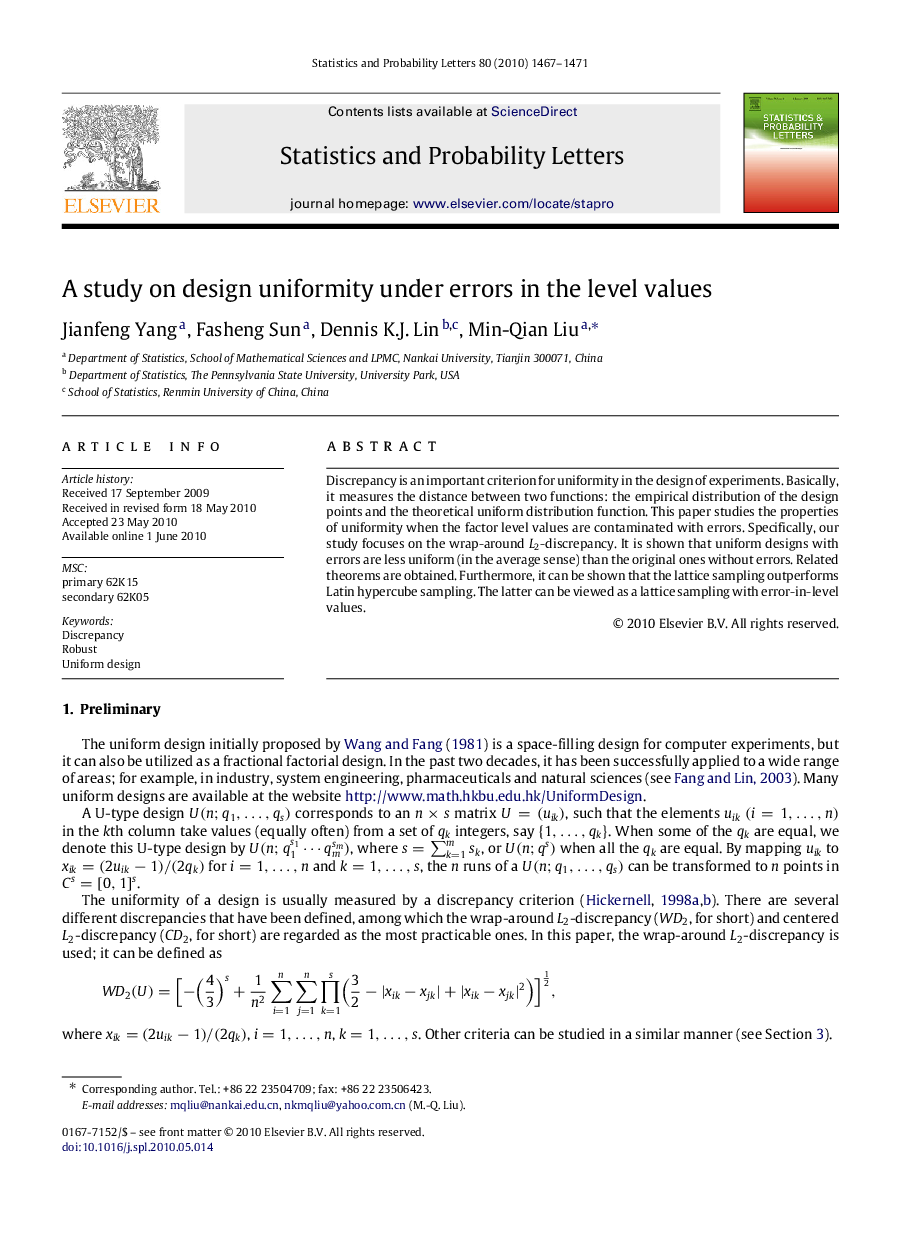| Article ID | Journal | Published Year | Pages | File Type |
|---|---|---|---|---|
| 1152848 | Statistics & Probability Letters | 2010 | 5 Pages |
Abstract
Discrepancy is an important criterion for uniformity in the design of experiments. Basically, it measures the distance between two functions: the empirical distribution of the design points and the theoretical uniform distribution function. This paper studies the properties of uniformity when the factor level values are contaminated with errors. Specifically, our study focuses on the wrap-around L2-discrepancy. It is shown that uniform designs with errors are less uniform (in the average sense) than the original ones without errors. Related theorems are obtained. Furthermore, it can be shown that the lattice sampling outperforms Latin hypercube sampling. The latter can be viewed as a lattice sampling with error-in-level values.
Related Topics
Physical Sciences and Engineering
Mathematics
Statistics and Probability
Authors
Jianfeng Yang, Fasheng Sun, Dennis K.J. Lin, Min-Qian Liu,
